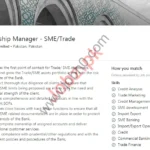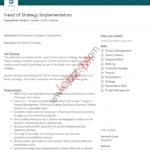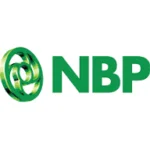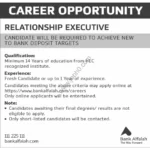Dreaming of working in the US, Canada, or Australia? These countries offer great jobs and lifestyles. Here’s a short, practical guide for 2025 to help you land a visa and job, written like I’m chatting with a friend.
Why These Countries?
-
United States: Tech hubs like Silicon Valley, finance in New York, and healthcare nationwide. It’s competitive but rewarding.
-
Canada: Welcoming with strong demand for tech, healthcare, and trades, plus great benefits.
-
Australia: Sunny vibes and jobs in IT, engineering, and nursing, with a relaxed lifestyle.
Step 1: Visa Basics
United States
-
H-1B Visa: For jobs needing a degree (e.g., tech, finance).
-
2025 Note: 85,000 visa cap, register in March.
-
Need: Job offer with sponsorship.
-
-
O-1 Visa: For extraordinary talent (e.g., award-winners).
-
Tip: Collect proof like media coverage.
-
-
EB-2/EB-3: For permanent residency, takes 1–2 years.
Start: Search “visa sponsorship” on LinkedIn or Indeed; consider an immigration lawyer.
Canada
-
Express Entry: Points-based for skilled workers.
-
2025 Note: Targets 500,000 immigrants, especially in tech/healthcare.
-
Need: Good score (age, education, experience, IELTS/TEF).
-
-
Provincial Nominee Program (PNP): Provinces pick workers for local needs.
-
Global Talent Stream: Fast tech job permits.
Start: Create an Express Entry profile on IRCC; boost language scores.
Australia
-
Subclass 189/190: Permanent residency via points.
-
2025 Note: Nurses, IT pros on Priority List.
-
Need: 65+ points, skills assessment.
-
-
Subclass 482: Temporary visa, employer-sponsored.
-
Working Holiday Visa: For 18–35, work/travel for a year.
Start: Check Skilled Occupation List, submit EOI via SkillSelect.
Step 2: Job Hunting
United States
-
Hot Sectors: Tech, finance, healthcare.
-
Where: LinkedIn, Indeed (“H-1B jobs”), MyVisaJobs.
-
Tips: Network at industry events; keep resume ATS-friendly (1 page).
Canada
-
Hot Sectors: IT, healthcare, construction.
-
Where: Job Bank, Workopolis, LinkedIn.
-
Tips: Join “Canada Jobs” groups; use 1–2 page resume, no photo.
Australia
-
Hot Sectors: Mining, IT, healthcare.
-
Where: SEEK, Jora, LinkedIn.
-
Tips: Attend Meetups; tailor 2–3 page resume.
Step 3: Moving Prep
Paperwork
-
US: Passport, DS-160, I-797.
-
Canada: Passport, WES credentials, police clearance.
-
Australia: Passport, skills assessment, health check.
Costs
-
US: $3,500/month rent (e.g., Boston), $2,000 visa fees.
-
Canada: CAD $14,000 proof of funds, CAD $1,800 rent.
-
Australia: AUD $4,500 visa, AUD $2,500 rent.
Culture
-
US: Fast-paced, direct communication.
-
Canada: Inclusive, polite, celebrate Canada Day (July 1).
-
Australia: Casual but professional, embrace “mate” culture.
Step 4: Settling In
-
US: Get SSN, open bank account (e.g., Chase), explore green card options.
-
Canada: Apply for SIN, enroll in healthcare, use settlement services.
-
Australia: Get TFN, register for Medicare, join professional groups.
Overcoming Hurdles
-
Visa Delays: Apply early, track online, or hire a consultant.
-
No Local Experience: Volunteer or get local certifications.
-
High Costs: Try smaller cities like Raleigh (US), Halifax (Canada), or Adelaide (Australia).
Final Tips
-
Stay Updated: Check USCIS, IRCC, or Australian Home Affairs for 2025 changes.
-
Stand Out: Improve language scores, polish LinkedIn.
-
Keep Going: Rejections happen—tweak and try again.
-
Connect: Join expat groups on Reddit or InterNations.
The US, Canada, and Australia are calling in 2025. With a solid plan, you can land a job and visa to start your new adventure. Take that first step now—you’ve got this!









